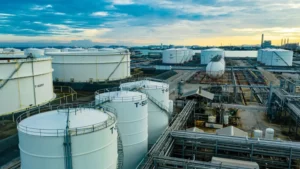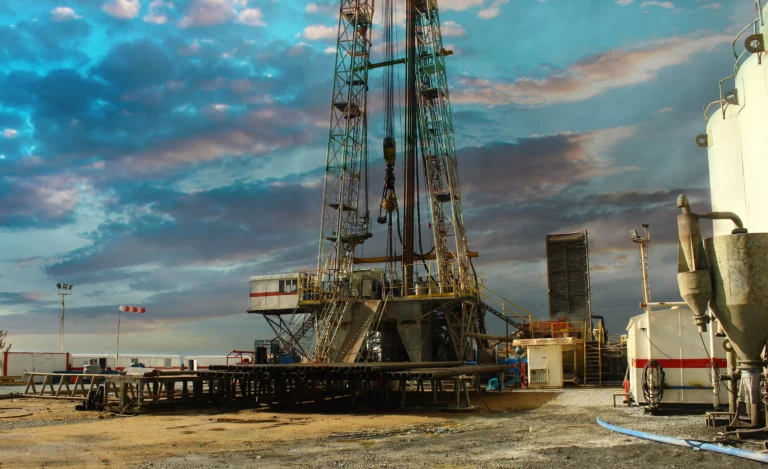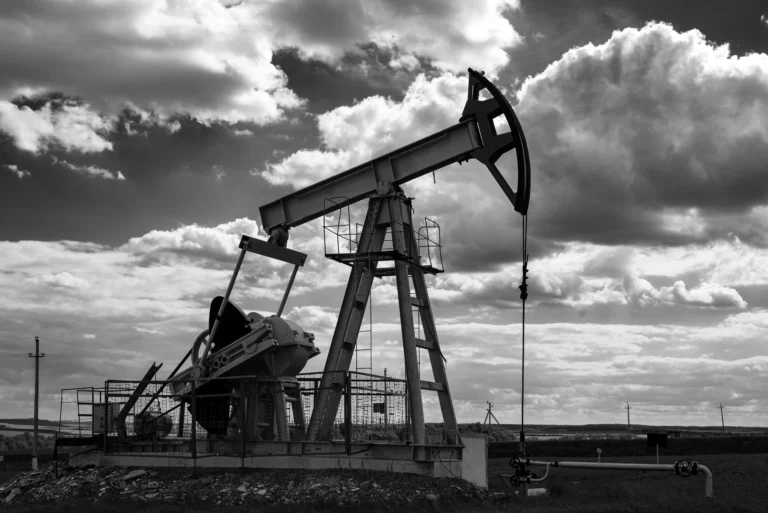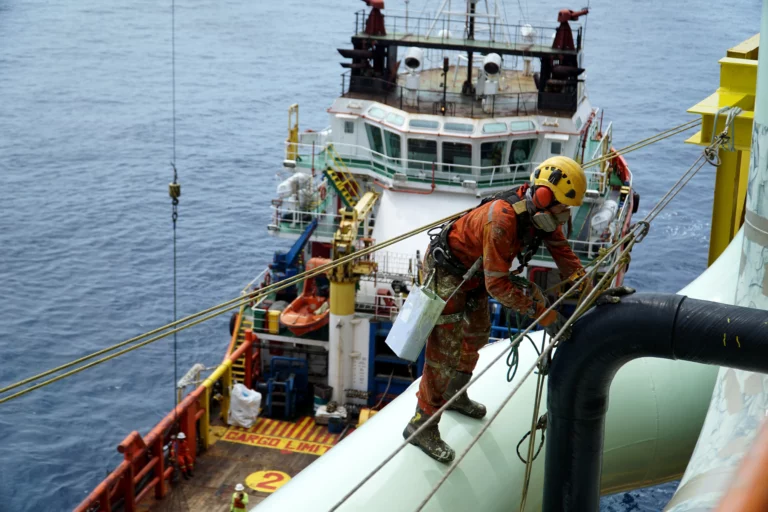Introduction
The oil industry, recognized as the “black gold”, is undergoing a major transformation due to the energy transition in the upstream sector. Oil and gas exploration and production companies face challenges in adapting and developing innovative strategies in response to the growing demand for cleaner energy sources in order to ensure their long-term viability.
This article analyzes the significant challenges of the sector, from the volatility of oil prices, technological innovation in exploration, challenges under extreme conditions , to the need to reduce environmental impact, exploring strategies that are forging the way and referring to the energy transition in the upstream sector as part of a process or pathway to a sustainable and profitable future.
Challenges and mitigation strategies
Before describing the challenges and mitigation strategies associated with the energy transition in the upstream sector, it is essential to recognize the context in which the upstream oil and gas sector is positioned today. This sector, fundamental to the world’s energy supply, faces the urgent need to adapt to an evolving energy paradigm, one that demands environmental sustainability and reduced dependence on fossil fuels.
The transition to cleaner, renewable energy sources is not only imperative to combat climate change, but also to ensure a resilient energy future. However, this change brings with it significant challenges, from technological and financial to social and regulatory.
Challenges in oil price volatility and its impact on investment
Oil price volatility is an intrinsic feature of the global energy market, which remains a critical challenge for the upstream sector. This fluctuation, influenced by a complex interplay of geopolitical factors, global demand and production levels, has direct implications for the financial stability and predictability of oil and gas companies.
The transformation towards greater sustainability and efficiency not only helps mitigate financial risks, but also prepares the sector for a more diversified and sustainable energy future.
Causes of fluctuation
Oil price volatility has undergone dramatic changes in recent decades. A notable example was the price drop in 2014, when a barrel of Brent went from over USD 100 to less than USD 50 in a few months, mainly due to oversupply.
More recently, in April 2020, the onset of the COVID-19 pandemic led to a historic drop, with WTI trading negative for the first time in history due to drastically reduced demand and storage constraints. Price and investment recovery requires flexible and resilient strategies to manage market uncertainty.
Mitigation strategies in oil price volatility and their impact on investments
In the face of this instability, companies in the sector have adopted various strategies to mitigate risks:
- Portfolio diversification: Companies are expanding their operations not only in different geographic regions, but also in different types of energy, including renewables. Chevron, for example, has increased its investment in solar and wind energy, seeking to reduce its dependence on oil and gas and mitigate the impact of price volatility on its revenues.
- Optimization of operating costs: Operational efficiency has become a priority. ExxonMobil achieved a 15% reduction in operating costs by 2020 through the optimization of its processes and the implementation of technologies to improve production efficiency.
- Advanced digital technologies: Digitalization provides companies with tools to respond with greater agility to market changes. The adoption of artificial intelligence-based solutions for supply chain management and oil price forecasting is enabling companies to quickly adjust their production and sales strategies. For example, BP has integrated data analytics technologies to improve the accuracy of oil demand forecasting, enabling more effective planning and faster response to price fluctuations.
Oil and gas regulatory compliance and environmental sustainability challenges
The urgency of climate change has catapulted environmental sustainability in oil and gas to the forefront of the global agenda, prompting the oil and gas sector to reassess and reshape its operating practices. The industry is under scrutiny, pressured not only by increasingly stringent environmental regulations, but also by a growing social demand for responsible business practices.
In this context, upstream companies are adopting innovative strategies to reduce their carbon footprint and align with global sustainability goals.
Carbon footprint reduction strategies
Initiatives to minimize the carbon footprint range from energy efficiency improvements to investments in carbon capture and storage (CCS) technologies and a growing commitment to renewable energy.
- Carbon capture and storage (CCS): It is estimated that CCS technology could capture up to 90% ofCO2 emissions from industrial and energy operations. However, global deployment of CCS remains limited, with approximately 40 projects in operation or under construction by the end of 2020, capturing about 40 million tons ofCO2 annually, a fraction of the total emitted globally.
- Renewable energy investment: The transition to renewable energy is accelerating. According to the International Energy Agency (IEA), renewables accounted for almost 90% of new global aggregate power generation capacity in 2020. Companies such as BP and Shell have announced plans to increase their investments in renewables, with BP planning to increase its spending on low-carbon projects to USD 5 billion annually by 2030, a significant increase from USD 500 million in 2019.
Challenges with technological innovation in exploration and production
The oil and gas industry is undergoing a significant transformation thanks to the incorporation of advanced technologies in the exploration and production processes. Artificial intelligence (AI), machine learning, precision drilling, and automation are playing crucial roles in this new era, ushering in a more efficient, accurate, and sustainable phase in the search for hydrocarbons.
Strategies with technological innovation in exploration and production
Artificial intelligence and machine learning: AI and machine learning are redefining the way seismic data is analyzed and interpreted. These technologies can process massive volumes of data at a speed and with an accuracy that was previously unimaginable.
A recent study suggests that the adoption of AI in seismic interpretation can improve accuracy in reservoir identification by 30-50%. In addition, the time required to analyze the data can be reduced from months to weeks or even days, significantly speeding up the decision-making process.
Precision drilling and automation: The technology of Directional drilling in oil wells has advanced significantly, with systems that allow for high precision directional and horizontal drilling. has advanced significantly, with systems that allow high-precision directional and horizontal drilling. These advances allow access to reserves that were previously considered inaccessible or unprofitable. Figure 1 shows a representative image of this process.

Drilling automation reduces the possibility of human error and improves workplace safety. According to industry data, automation can increase operational efficiency by 15-25%, in addition to reducing drilling-related operating costs by 20%.
Reduced costs and environmental impact: Technological innovation in exploration not only improves project profitability by optimizing processes and reducing exploration and production times, but also contributes to a more sustainable operation. Precision drilling minimizes the number of wells needed to access a reservoir, reducing the impact on the environment.
In addition, improving the energy efficiency of operations can lead to a significant reduction inCO2 emissions. For example, the implementation of smart energy management systems on drilling rigs can result in up to a 10% decrease in greenhouse gas emissions.
Exploration in previously non-viable areas: With the help of these disruptive technologies, the industry is successfully exploring new frontiers. Areas that were once considered too challenging or expensive for exploration, such as extreme deep sea or arctic regions, are now within reach. These technologies have not only made exploration and production in these environments possible, but have also ensured that it can be carried out more safely and efficiently.
Challenges in extreme conditions
Challenges in extreme conditions represent one of the most daunting challenges in the oil and gas industry, pushing the limits of engineering and technology. Exploration and production in deepwater and arctic environments are particularly challenging due to low temperatures, high pressure and geographic isolation. However, these environments also harbor significant hydrocarbon reserves, making overcoming these obstacles a strategic raw material priority.
Strategies and adaptation
- Deepwater: Deepwater exploration, defined as operations at depths of more than 500 meters, has seen remarkable growth. According to the U.S. Energy Information Administration, it is estimated that approximately 30% of oil production in the Gulf of Mexico comes from deep water. The industry has developed floating platforms and remote drilling systems that can operate at depths of up to 3,000 meters, facing extreme pressures and low temperatures.
- Arctic environments: Exploration in arctic regions presents a unique set of challenges, including temperatures that can drop to -50°C and the presence of sea ice. Companies have invested in specialized technology, such as icebreakers equipped for drilling and advanced environmental monitoring systems to minimize ecological impact.Despite the difficulties, the U.S. Geological Survey estimates that the Arctic contains approximately 13% of the world’s undiscovered oil resources.
- Underwater robots: Remotely operated vehicles (ROVs) and autonomous underwater systems (AUVs) are playing a crucial role in the exploration and maintenance of deepwater structures, enabling inspection and repair in environments where human presence is limited or impossible.
- These robots can operate at depths and pressures far beyond human capabilities, providing real-time imaging and performing complex tasks on the seafloor.
- Specialized equipment: The development of materials and equipment that can withstand extreme conditions is essential. The use of special alloys for pipes that resist corrosion in cold salt water and thermal insulation systems for machinery are examples of how the industry has advanced in creating durable and efficient solutions.
Companies continue to invest in research and development to further improve safety and minimize the environmental impact of their operations in extreme environments.
The road to energy transition in the upstream sector
This is a complex and multifaceted issue, especially in the context of the upstream oil and gas sector. This sector, which is responsible for the exploration and production of natural resources, is at a critical point due to the growing global need for a more sustainable future that is less dependent on fossil fuels.
Despite the challenges, the upstream sector has the opportunity to lead this transformation. The following are the ways in which it can make a significant contribution to the energy transition in the upstream sector.
Investment in clean technologies
One of the fundamental strategies for the upstream sector on its path to environmental sustainability in oil and gas is investment in clean technologies. This includes the development and implementation of innovative solutions such as carbon capture and storage (CCS), solar and wind energy, and green hydrogen. These technologies not only reduce the carbon footprint of existing operations, but also open up new lines of business that can be sustainable in the long term.
Collaboration with governments and other industries
Energy transition in the upstream sector requires a collaborative effort. Industry players must work hand in hand with governments to create policies that encourage investment in renewable energies and clean technologies. Collaboration with other industries is also crucial for integrating clean energy solutions into a wide range of sectors, including transportation and manufacturing, among others. This synergy can significantly accelerate the move towards a more sustainable energy future.
Adopting a holistic approach
The holistic approach is vital. It means balancing current energy needs with the imperatives of environmental sustainability in oil and gas. This involves not only reducing carbon emissions and dependence on fossil fuels but also ensuring energy accessibility and reliability for all communities around the world. The transition to a greener energy system must be just and include measures to mitigate the economic and social impact on regions and workers dependent on the fossil fuel industry.
Opportunities
Although the path to energy transition in the upstream sector presents significant challenges, it also offers opportunities for the sector. Reinventing towards more sustainable practices can improve the resilience and long-term viability of companies, while contributing positively to the well-being of the planet. Investments in research and development, the adoption of renewable energy-friendly policies, and a commitment to technological innovation in exploration are essential to overcome these challenges.
Conclusions
The upstream sector of the oil and gas industry faces unprecedented challenges, from the volatility of market oil prices, technological innovation in exploration, challenges in extreme conditions to the demands of environmental sustainability in oil and gas. However, with these challenges come significant opportunities to innovate and adapt.
Through the adoption of advanced technologies, commitment to sustainability and exploration of new frontiers, the industry can overcome these obstacles and secure its place in the world’s energy future. The future of black gold depends on the industry’s ability to navigate these challenges with foresight and innovative strategies.
This path is not without obstacles, but with the right commitment, the sector can become a pillar of global energy sustainability. Explore the future of the upstream sector. Join the energy revolution!
References
Own source


























